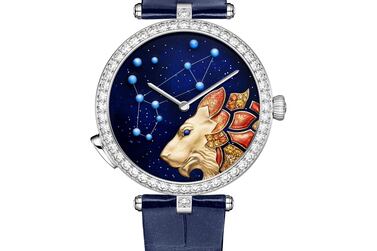When we think of jewellery, the mind invariably turns to precious materials such as gold, platinum and diamonds. From the pharaohs of Ancient Egypt and Mughal rulers of India to Europe's ruling classes, the human race has long valued that which sparkles. Even in today's digital age, betrothals are made with white diamonds and marriages sealed with bands of gold.
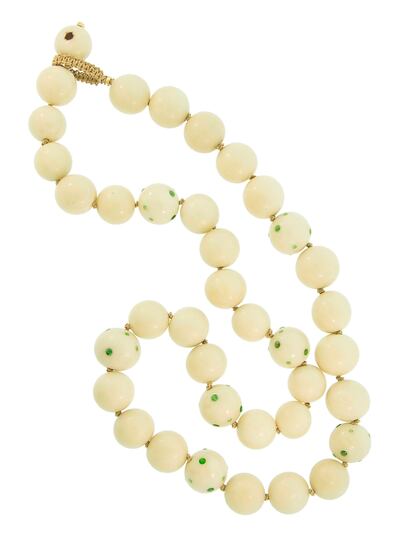
However, this was not always the case. In prehistoric times – before humans learnt how to extract metal from ore – our early ancestors adorned themselves with shells, bones and pieces of stone, as talismans and markers of status. The humblest of materials were imbued with beauty and treated with reverence.
Now, a small but growing number of jewellery designers are revisiting this mindset – seeing potential in materials with a value that goes well beyond weight and carat-count. One such pioneer in this part of the world is Azza Al Hujairi, a Bahraini jewellery designer and founder of Azza Showroom. Under this umbrella, Al Hujairi seeks out small, exciting designers from around the world, and brings them to the Middle East.
'It's so personal; it's on your skin'
"When I got into jewellery, I was obsessed with the idea of what happens if we cease to exist as humans. What do we leave behind?" she explains. "If you go to a museum, you learn about how people lived, and who they were, from their jewellery. It's so personal; it's on your skin. So I am hunting the world for people who are focused on creating jewellery that immortalises things," she says. "With Silvia's pieces, they are immortalising nature."
The aforementioned Silvia is founder of the Silvia Furmanovich jewellery brand, which is located in Brazil and crafts adornments from wood. Having grown up in a goldsmithing family (her father had his atelier in the family home, while one of her grandfathers was a goldsmith to the Vatican), Silvia Furmanovich launched her own company in 1997.
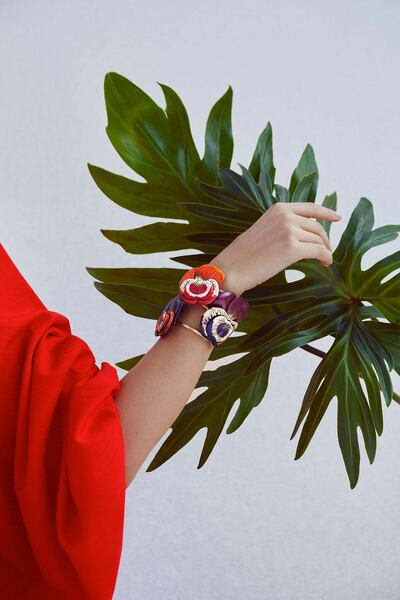
Keen to utilise the riches of her home country, she began to combine gold with Brazilian semi-precious stones, such as tourmaline and blue topaz, as well as salvaged woods, shells and even coral. She also began to use pieces she collected during her extensive travels, such as antique hand-carved Japanese netsuke. She created pieces such as cuffs made from tiny porcelain beads, strung on super-strength Kevlar for practicality. Elsewhere, she added brilliant-cut diamonds to tiny Rajasthani miniatures, while a necklace that looks like ivory is actually seeds from the jarina tree, buffed to a milky shine and inlaid with tiny gemstones.
The influence of nature
Today, Silvia is helped by her son, Alexandre, who I recently met in Dubai. Walking me through the collection, he is quick to describe the painstaking process behind each piece. "This company was started by my mother 20 years ago, and we used to work with different materials all the time," he explains. "We like experimentation and taking ideas from nature."
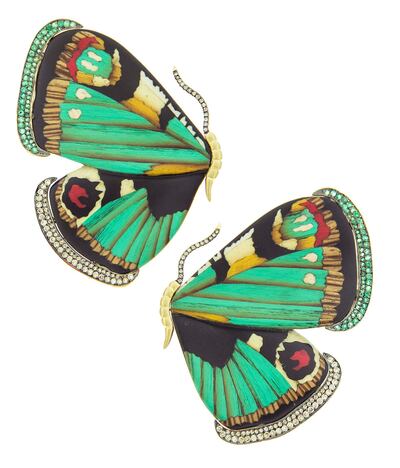
Four years ago, Silvia came across artisans from northern Brazil who were specialists in wood marquetry. Intrigued by this delicate skill of patching tiny slivers of wood together to form an image, Silvia persuaded them to shift from making furniture, and focus instead on decorating a range of wooden clutches for her. The resulting pieces were so beautiful, she asked the workshop to reduce the scale even further and decorate earrings.
An ancient artform (the earliest surviving example of marquetry dates back to 2600 BC), it requires immense patience and skill. First, wood is sliced into thin sheets. It's then hand-cut to shape, before the pieces are carefully assembled into a final form. The resulting wooden, mosaic-like effect has been used to decorate furniture for centuries. Scaling it down to jewellery, however, was unheard of.
"Everything is made with little pieces. One by one, they are hand-cut. To make the butterfly earrings, it takes about two weeks to make one pair. It takes one week to carve the wood, then we send it to the north for the marquetry," says Alexandre.
Made in the Amazon
As it is made from wood, most marquetry comes in shades of cream and brown. However Silvia Furmanovich’s pieces are brightly coloured, with intense emerald greens, strong blues and rich, earthy reds. “These are all natural colours and not dyed. Some of the colours come from a reaction with substances, like gunpowder, for example, which turns the wood red.
“Or the green, this comes from chrome. This is a chemical reaction that happens in the forest already. The trees pull up the minerals from the soil, and nothing is dyed. Nothing is tinted.” Alexandre holds up a pair of colourful earrings for me to inspect. “These are mushrooms that are found in the Amazon and we just took the colours from the original mushrooms,” he explains.
Not only is the palette entirely natural, but the wood itself is also salvaged from the rainforest. "The wood is all found and so is therefore sustainable, and that's very important because it's something that people will treasure. That these pieces are all made in the Amazon rainforest."
Holding up a different pair of drop earrings for me to see, he explains: “This is made to look like the banana leaf. We used purple wood on the outside, and then see inside? The red part is inlaid with the marquetry.”

The workmanship is nothing short of extraordinary. One wooden clutch is faceted to look like a cut jewel, while a pair of fan earrings seem to be made of delicate yellow feathers.
Elsewhere in the brand’s collection, a large leaf wraps around a wrist, while a butterfly seems to have gently alighted on a necklace. “And it’s really handmade – from the cutting of the wood to the marquetry to the goldsmithing.”
The work of a specialist
Bringing together its skills, Silvia Furmanovich adds jewels to the marquetry, in spite of the extra challenges this presents. "The goldsmith has to be a real specialist to do this kind of work, so as not to damage the wood. He cannot put it into acid afterwards to clean the stones, for example, so he has to do it perfectly," says Alexandre. "If the acid touches the wood it will stain it, so we have to make it again. It's a huge process it takes about two or two-and-a-half months to get some of these pieces ready."
An increasingly number of other companies are also embracing unexpected materials. Perhaps inspired by the Roman trend for portraits carved from shell, stone, glass or even lava, Italian brand Marni has been using resin and leather in its jewellery for some time. Its latest creations include the Lantern earrings, crafted from turquoise resin to create the shape of a fluted globe, and a pair of crystal-drop earrings with a mustard yellow leather stud.
On the catwalk
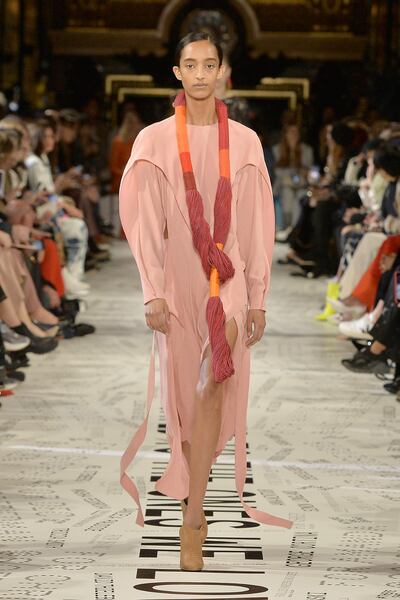
Meanwhile, for autumn/winter 2019, Stella McCartney sent models down the runway with huge, oversized ropes of linen wrapped in silk thread, by textile artist Sheila Hicks, slung around waists and necks as exaggerated adornments. And it is not only high-end designers who are looking beyond the conventional. Canadian jewellery brand Konzuk Collections specialises in shaping concrete and stainless steel into sparse but delicate jewels. Frustrated with the narrow view of what constitutes jewellery, the brand's founder, Karen Konzuk, looked outside the norm and began to experiment with a range of materials, which forced her to rethink her working methods in the process. The result is a collection she describes as "wearable architecture" and "Bauhaus-inspired geometric minimalism".
Stripped entirely of frippery, the resulting pieces are starkly beautiful, with simple steel concave discs lined in black concrete presented as necklaces, earrings and even asymmetric rings. Mixing diamond dust into the concrete creates minuscule points of light that flash as the jewellery moves, calling to mind a dark night sky.
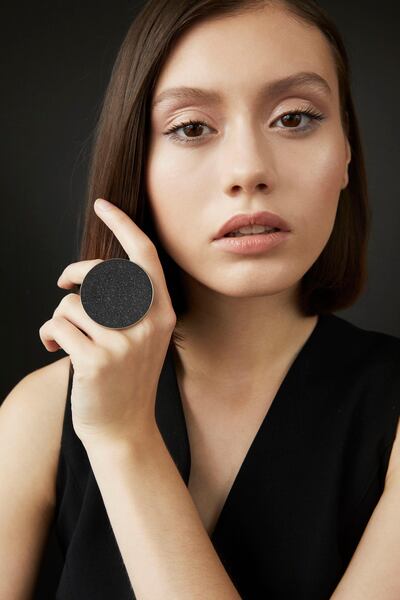
"The sparkle from the concrete and diamond dust evokes a velvety blackness," Konzuk explains. "The concave dome-like pieces in this series are meant to evoke the magnetic power of black holes. Crafted from laser-cut stainless steel discs, the dome shape of each piece is hammered by hand with the use of only a dapping block."
Inspired by a recent move, and the vast night sky that she now finds herself looking up at from her new home, Konzuk describes the collection as being an homage to "astronomy, nocturnal views and the timeless ritual of stargazing".
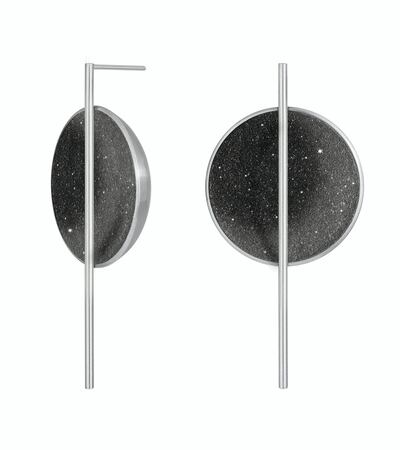
While many are keen to invest in beautifully avant-garde jewellery that employs unexpected materials crafted into new shapes, Al Hujairi discovered that for others, old habits die hard.
"When I introduced Silvia into the region, it was at a big jewellery exhibition that was taking place, and other jewellers came up to see who the new competition was," Al Hujairi recalls.
“When they realised the jewellery was made of wood, they looked at me with such sadness, that we were selling gold and wood together. They were almost angry, saying, how could I do that to people, selling wood for that price?
“But, actually, it is all just about expressing yourself. It is about using pieces of jewellery to highlight your own personality.”

